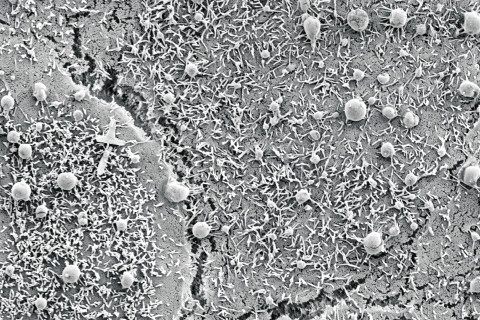Extracellular vesicles are agents of intercellular communication, and their significance is just starting to dawn on scientists. In the future, they may provide insight into whether we are developing a disease, and they may also serve as drug carriers.
Before scientists understood that cells use vesicles to communicate with one another, these nano-sized bubble-like organelles secreted by our cells were seen as mere cellular waste. Molecules transported by extracellular vesicles from their cell of origin regulate the function of other cells in health and disease, such as in inflammations and cancer. In addition to the extracellular matrix, extracellular vesicles are present in all bodily fluids.
Moreover, as all cells secrete vesicles, they are also abundant in our food. They are also believed to play a role in mediating the health effects of breast milk and intestinal bacteria, among other things.
“In recent years, scientists have awoken to the enormous potential of extracellular vesicles as tools for diagnostics and treatment, and as drug carriers,” Docent Mikko Turunen explains.
In many diseases, the content and amount of extracellular vesicles changes, and this could serve as the basis for making a diagnosis from a blood sample. In addition to easiness, the benefits of a liquid sample over a cancer biopsy include that it paints a picture of the overall situation, unlike a local tissue sample.
For vesicle researchers, biobanks are a nothing short of a treasure. A project launched by the Finnish national biobank cooperative is collecting samples from patients with cancer, and analyses them for extracellular vesicles, among other things.
“Similar samples will also be collected from patients with other diseases,” says Research Manager Arto Mannermaa from the Biobank of Eastern Finland.
In recent years, scientists have awoken to the enormous potential of extracellular vesicles as tools for diagnostics and treatment, and as drug carriers.
Docent Mikko Turunen
The characteristics of cancer cells are imprinted on extracellular vesicles originating from them. This observation is made use of in research that explores the range of possible mutations in cancer cells and the changes taking place in the expression of small gene-regulating RNA molecules by analysing samples taken at different stages of disease. “We seek to understand what kinds of mutations and combinations predict the recurrence of a cancer, for example, and to find suitable drug therapies.”
Cancer can spread and form metastases via vesicles. In addition to the vesicle content, molecules attached to their surface also play a role, such as the extracellular sugar compound hyaluronan. “Hyaluronan may steer the transportation of vesicles to certain target cells, but it can also help in drug targeting,” Academy Research Fellow Kirsi Rilla says.
Her research group discovered that hyaluronan-covered vesicles are formed especially when the production of hyaluronan is activated, which is often the case in many cancers and inflammations.
Working in the group led by Academy Professor Asla Pitkänen, Postdoctoral Researcher Jenni Karttunen and Early Stage Researcher Mette Heiskanen turn to vesicles to diagnose traumatic brain injury. “For example, it is often difficult to evaluate the effects of a head injury, as the mildest forms of brain damage cannot be detected even by imaging. However, changes occurring in the brain are quickly visible in vesicles.”
“Calling extracellular vesicles the social media of cells is an apt description. Our goal is to learn to interpret and utilise them,” Karttunen says.
Calling extracellular vesicles the social media of cells is an apt description.
Postdoctoral Researcher Jenni Karttunen
Associate Professor Tarja Malm’s research group, on the other hand, studies the role of extracellular vesicles in intercellular communication in brain diseases, and whether vesicles could be used in the prediction and treatment of ischaemic stroke. “Vesicles could be loaded with exactly the kind of small RNAs that are lacking form cells when circulation gets disturbed. Their advantage is that they can effectively access the brain.”
Myocardial infarction has already been successfully treated in an animal model by activating vascular growth factor genes with small RNAs transported to the heart by virus carriers. According to Turunen, extracellular vesicles could turn out to be even better carriers. “They transport these molecules in any case, which means that the body doesn’t reject them and disposes of them naturally.”
According to Associate Professor Samir El Andaloussi from the Karolinska Institutet, extracellular vesicles are interesting also from the viewpoints of stem cell and immunotherapy. The risks of treatment are smaller when instead of cells that are capable of dividing, vesicles produced by them are introduced to the body. “They can still repair tissue damage just like stem cells, and fight off cancer just like immune cells.”
El Andaloussi collaborates with Turunen and Malm, and is one of the founders of Evox Therapeutics, a company that modifies extracellular vesicles and turns them into drug carriers. He was one of the lecturers on an international course on extracellular vesicles organised by the University of Eastern Finland last year, during which a research society in this field was also established in Finland.
Vesicle research is technically challenging, but the Kuopio Campus provides a good setting for it. “We still have work to do when it comes to methodology and the interpretation of results, and it is also important to share expertise. It’s great how vesicle research brings together scientists from different fields,” Rilla says.
